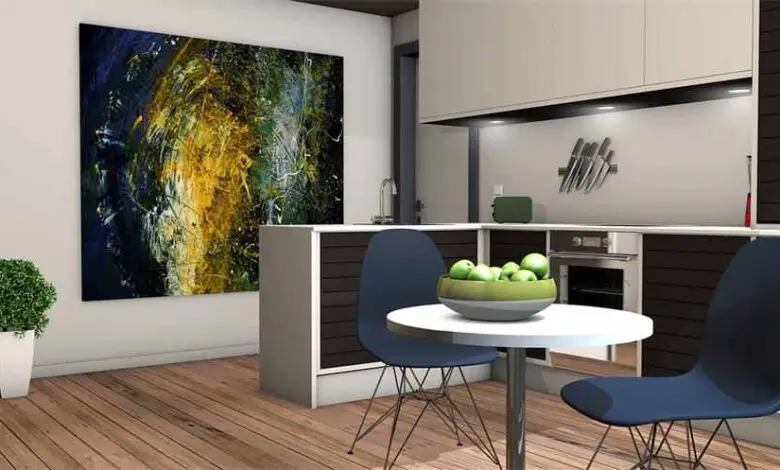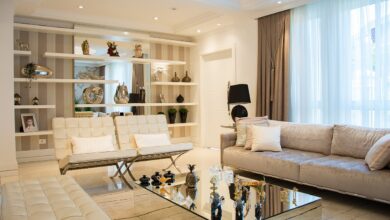What You Need to Know About Crafting Practical Living Spaces

Creating a home that looks beautiful is one thing—but designing a space that’s equally practical and livable takes thoughtful planning and smart decisions.
Whether you’re outfitting a new apartment, refreshing a dated room, or optimizing a family home for daily use, the key is to strike a balance between form and function. Here’s what you need to know about crafting practical living spaces that truly work for your lifestyle.
Start With a Clear Purpose
Every room should serve a defined function. Before you dive into furniture shopping or color palettes, ask yourself: What is this space really for? Is your living room primarily for entertaining guests, watching movies with the family, or doubling as a workspace?
Understanding the primary use of each room allows you to make decisions that support that purpose.
For example, a multipurpose living room might need modular furniture, layered lighting, and storage solutions that keep clutter at bay. On the other hand, a reading nook might require nothing more than a cozy armchair, a small bookshelf, and warm lighting.
Embrace Smart Layouts
Layout is one of the most important aspects of practicality. A good layout facilitates flow and accessibility, while a bad one can make even a beautifully decorated room feel awkward or cramped. Prioritize traffic flow and give people room to move. Avoid blocking pathways with furniture and be mindful of how the space “breathes.”
Consider these quick layout tips:
- Leave at least 18 inches between coffee tables and seating.
- Make sure doorways and walkways remain clear.
- Create conversation zones with groupings of chairs or sofas.
Prioritize Storage (And Hide It Well)
Storage is the unsung hero of practical design. A room that lacks sufficient storage will always feel cluttered, no matter how stylish it is. Look for furniture with built-in storage—think ottomans, coffee tables with hidden compartments, or bed frames with drawers.
Wall-mounted shelves, vertical cabinets, and under-the-stairs cubbies also make excellent use of unused space. And remember: storage doesn’t have to be visible. Use baskets, bins, and closet organizers to keep items tucked away but easily accessible.
Choose Durable, Easy-Care Materials
If you’re designing for real life—kids, pets, guests, or just daily use—you need materials that can keep up. Choose upholstery fabrics that are stain-resistant and durable. Performance fabrics like microfiber or treated cotton blends are excellent options.
Floors are another major consideration. High-traffic areas benefit from hardwood, laminate, or luxury vinyl plank flooring, which are all easier to clean than carpet. For areas where you want a touch of warmth, rugs are essential.
When it comes to rugs, size matters just as much as style. In living rooms or dining areas, a 6×9 rug is often the perfect dimension for defining a space without overwhelming it. You can find the perfect 6×9 rug to complement your room while adding comfort, texture, and practicality.
Use Lighting Strategically
Practical living spaces are well-lit spaces. Relying solely on overhead lighting can create shadows and uneven illumination. Instead, layer different types of lighting:
- Ambient lighting provides overall illumination.
- Task lighting focuses on specific activities like reading or cooking.
- Accent lighting highlights artwork or architectural features.
Consider dimmers and smart bulbs to give you flexibility and control over your lighting throughout the day.
Make It Comfortable
At the end of the day, a practical living space should be comfortable. That means choosing seating with proper support, adding throw pillows and blankets for warmth, and incorporating elements that make you feel at home.
Don’t underestimate the power of scent, sound, and temperature in creating a livable space. A quiet fan, essential oil diffuser, or soft music playing from a smart speaker can enhance the ambiance and contribute to a more inviting environment.
Add Personality Without Sacrificing Function
Just because a space is practical doesn’t mean it has to be boring. Personal touches like art, photographs, and unique décor items can bring life to a room. The trick is not to overcrowd. Choose statement pieces and curate collections that align with your aesthetic but still leave room for functionality.
Open shelving, gallery walls, or a vibrant rug can offer personality while serving a purpose. And remember, even functional items—like storage baskets or lighting fixtures—can contribute to the design.



